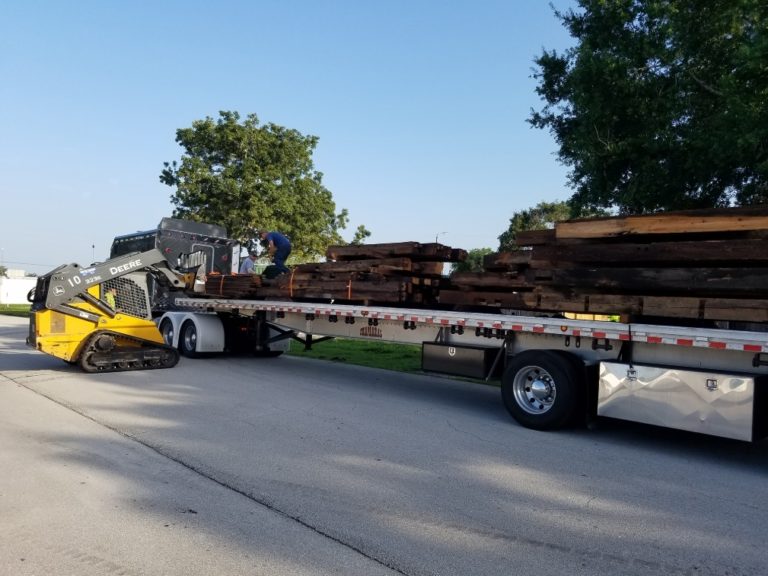How to Load Lumber
The Requirements of Loading Lumber for a Flawless Shipping Process
Logs are usually very long and huge. When loading them from a tree plantation or in the forest, site obstacles may pose a huge challenge. Luckily pyramid loaded method provides maneuverability and alternative lifting methods besides using forklifts. Lumber can be in many forms, sizes, and shapes. It can be logs shipped directly from the forest, timber from sawmills, or manufactured woodwork ready to be shipped to consumers. Knowing how to load and transport lumber and other wood products safely will help in elimination of loss, breakage, and chances of accidents.

Overcoming Challenges of Lumber Transport
The biggest challenge lies in shipping over-dimensional lumber pieces from one location to another, either over a short or long haul distance. You want to ensure that, after loading such a large lumber, it’s not moving sideways, it is not shifting front to rear, and the front edge is not lifting from overloading the tail end during transportation. To avoid such eventualities and actually enjoy loading and shipping lumber, you basically need the following:
Equipment to properly load lumber
A heavy-duty towing tractor and a matching trailer with the capacity to haul the required lumber and equipped with features that facilitate easy loading
The skills to load and balance the weight effectively and quickly.
Flatbed trucks are the best option when it comes to shipping oversized lumber safely and securely. They can accommodate oddly shaped wood products and oversize timbers, and transport them from the forest to the sawmill or from the mill yards to construction sites. Their openness also facilitates quick and easy loading from any side. The powered log loader can lift and load the trailer without having to go around the trailer.
How to Load Lumber Safely for Secure Shipping
One way of facilitating a safe load of lumber is by ensuring the corners, and the sides of the flatbed are mounted with strong poles. Also, dunnage/lumber on the bed of the trailer and stakes on the sides of the deck will help in safe loading. The sides should be mounted at regular intervals with the poles.
The poles should be made of sturdy materials of height not bigger than the width of the trailer. Once the trailer is fully loaded, it’s time to secure the lumber adequately. Following the company’s guidelines, tie down the lumber from either side at regular intervals. The number of tie-downs should be adequate to secure the lumber during shipping safely.
Safety Hazards When Loading Lumber for Long or Short-Haul
When loading lumber, either from the forest or at the sawmill yard, some common safety hazards requires your keen attention. They include:
Size and shape of the lumber,
Damaged tie-downs or missing straps
The potential energy stored on lumber while lifted
Your safety when operating at an elevated position
The stability of the ground
The presence of several workers operating different heavy equipment machines around you
The range of the lift and the weight of the lifted lumber.
Improperly lifted lumber and also improperly loaded lumber on the trailer
Environmental hazards, presence of overhead power lines, and nearby structures, etc.
Get Your Lumber Transport Now!
Step 1: Fill Out Quote Form
Fill out the short & easy quote form.
Step 2: Speak With An Agent
We’ll pick up your heavy equipment or vehicle.
Step 3: Get Transported On Time
We deliver on time so you can get back to work.